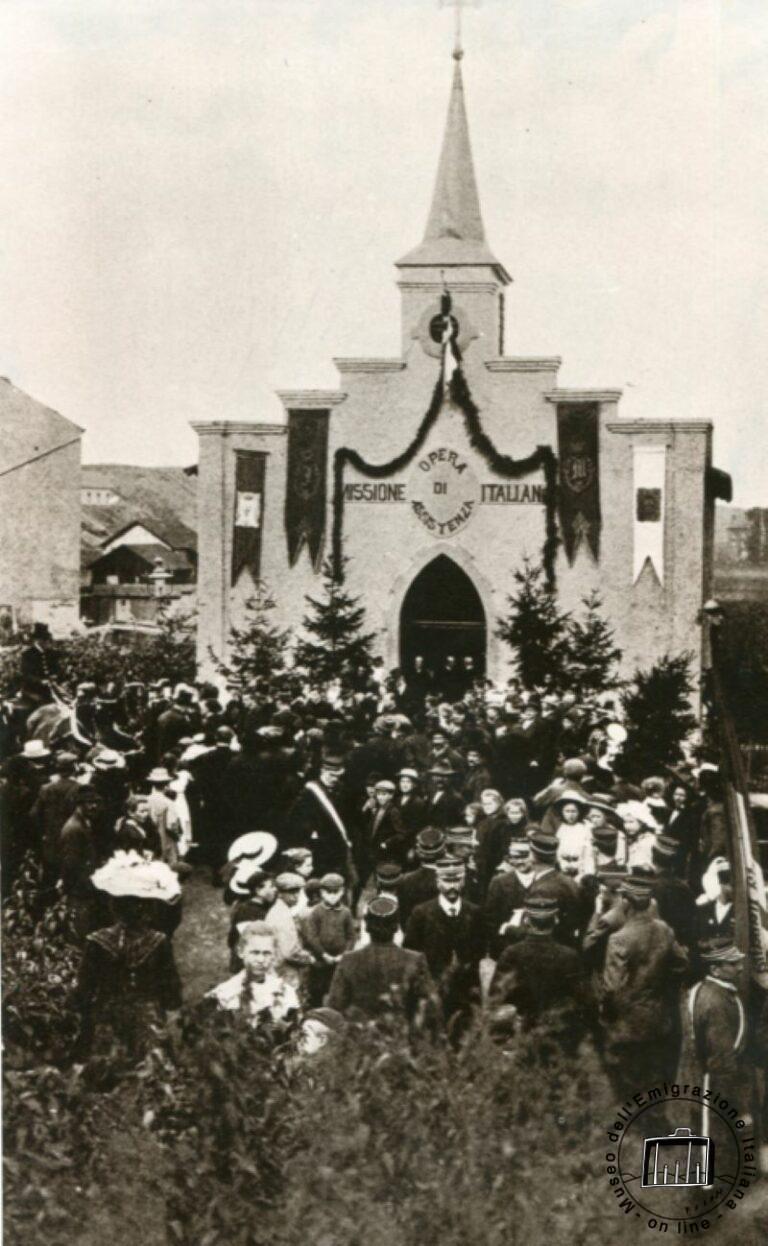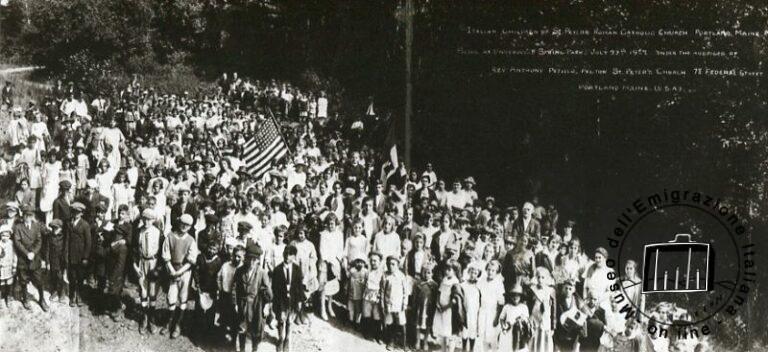Among the communal rites, that is, those that could involve the whole family first and then the whole community, were religious festivals; especially, in addition to Christmas and Easter, those related to the celebration of patron saints.
The emigrants, through participation in them, connected to the rhythms and life of their home community, felt the saints as companions who had followed them into exile and whose "presence" comforted and helped them.
This "folk" religiosity, which is still alive today, has often provoked criticism even from church hierarchies who, often belonging to other ethnic groups, showed themselves incapable of understanding a culture, in their opinion, bordering on folklore.
In fact, religious rites have always been part of the migrants' baggage and helped to preserve their identity. And how important religion has been in the various communities of Italian origin is shown by the development of places of worship: from the simple wooden chapel to the church made of stone but with few ornaments and finally to the large churches with a soaring bell tower built in Italian-inspired architectural styles.





